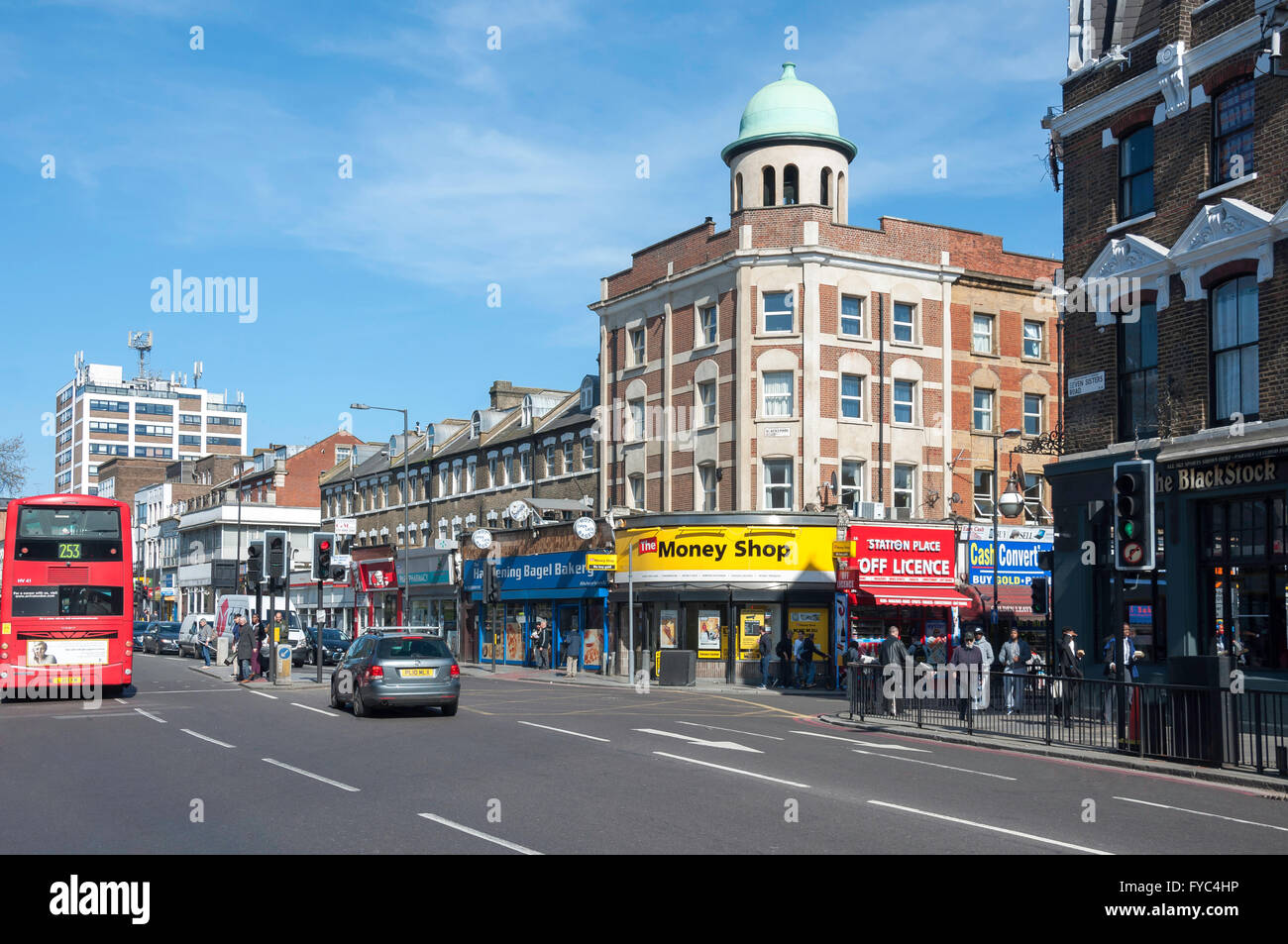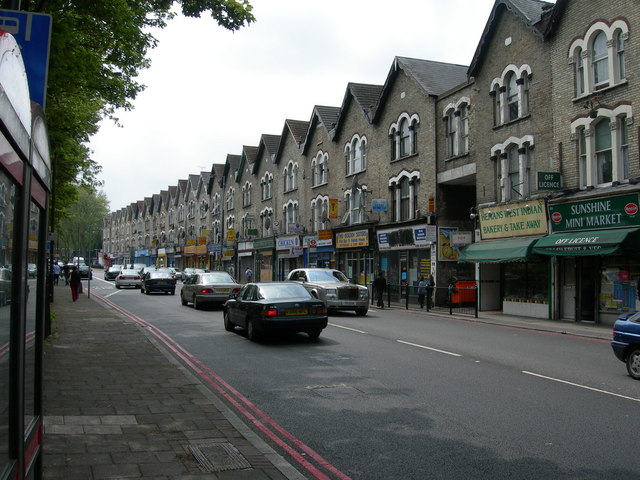
London’s Enduring Artery: A Journey Down Seven Sisters Road
The Seven Sisters Road doesn’t announce itself with the grandeur of Oxford Street or the historic weight of Fleet Street. Instead, it unfurls across North London with a quiet, persistent energy, a sprawling artery pulsing with the everyday lifeblood of a city perpetually in motion. Stretching over five miles, from the bustling nexus of Seven Sisters in Tottenham to the leafier environs near Clissold Park and Stoke Newington, this isn’t merely a road; it’s a living document, a vibrant canvas upon which the stories of countless Londoners are painted, day in and day out.
To truly understand London, one must stray from the postcard vistas and delve into its beating heart, found in thoroughfares like the Seven Sisters Road. Here, the city’s complex tapestry of cultures, histories, aspirations, and challenges is woven into a compelling narrative, a street-level symphony of shopfronts, languages, aromas, and human endeavour.
The Echoes of Seven Elms: Unearthing the Name

The name itself, "Seven Sisters Road," conjures images of folklore and ancient tales. While no dramatic legend of seven siblings quite fits the bill, the truth is equally rooted in the landscape. The road takes its name from a cluster of seven elm trees that once stood proudly near the crossroads where the road meets High Road, Tottenham, close to the present-day Seven Sisters tube station. These venerable trees, believed to be hundreds of years old, served as a prominent landmark for travellers and locals alike.
"It’s a charming origin, isn’t it?" muses Dr. Eleanor Vance, a local historian specializing in London’s urban development. "Before the relentless march of urbanization, these trees were a natural beacon, a meeting point. They spoke of a more rural past, a time when this area was primarily agricultural land feeding the burgeoning city."
Indeed, the Seven Sisters Road began its life in the 19th century as a turnpike, officially opened in 1833. Its purpose was pragmatic: to connect Islington and the agricultural lands of Tottenham, facilitating the movement of produce into the hungry markets of central London. This early function as a conduit for goods and people set the stage for its future as a vital link, a characteristic it retains to this day. The trees eventually succumbed to disease and development, but their memory, enshrined in the road’s name, serves as a subtle reminder of the landscape that preceded the brick and mortar.
A Kaleidoscope of Cultures: The Western Pulse
Our journey begins at the western end, in the vibrant heart of Tottenham, where the road meets the roar of the A10 and the railway lines converging at Seven Sisters station. This is a place of relentless motion, a sensory overload in the best possible way. Here, the Seven Sisters Road is a bustling artery, a commercial powerhouse fueled by a dizzying array of independent shops.
"This is real London," declares Maria Rodriguez, whose Dominican bakery, ‘Dulce Sueño,’ has been a fixture here for fifteen years. The scent of warm bread and sweet pastries spills onto the pavement, mingling with the aroma of Turkish grilled meats, West African spices, and freshly brewed coffee from a dozen different nations. "You hear ten languages before you walk two blocks. We all work hard, we all live together. It’s a beautiful mess, but it’s our beautiful mess."
The storefronts are a testament to global migration: Polish delis sit beside Eritrean coffee houses, Caribbean barbershops next to Kurdish grocers. Halal butchers, sari shops, mobile phone repair kiosks, and convenience stores packed to the rafters form a continuous, colourful ribbon. Shoppers haggle good-naturedly, children chase pigeons, and the rhythmic thump of reggae or Afrobeats often spills from open doorways. The road here is not just a thoroughfare; it’s a marketplace, a social hub, a place where communities coalesce and thrive.
The area around Seven Sisters station, in particular, has long been a gateway for new arrivals to London, offering affordable housing and a welcoming network of support. This constant influx has ensured a perpetual reinvention of the streetscape, a dynamic evolution that keeps the road feeling alive and relevant, even as pressures of gentrification slowly creep in from other parts of the city.

The Shifting Sands: Towards Finsbury Park
As we travel east, the character of the Seven Sisters Road subtly shifts, though its fundamental vibrancy remains. Passing through areas like Stamford Hill, the road takes on a distinct identity, largely shaped by the significant presence of London’s Orthodox Jewish community. Here, storefronts transition to kosher bakeries, religious bookshops, and traditional clothing stores. The streets are often dotted with men in dark suits and hats, and women in modest attire, speaking Yiddish alongside English.
"Stamford Hill has a unique rhythm," explains Rabbi Mendel Goldstein, who runs a community outreach centre off the main road. "Our community has been here for generations, and the Seven Sisters Road serves as a central spine. It connects us, provides for us, and, in a way, protects our traditions within the larger city." This segment of the road offers a glimpse into a deeply rooted cultural enclave, a testament to London’s ability to host diverse ways of life within its sprawling urban fabric.
Further east, the road brushes past the majestic expanse of Finsbury Park, one of London’s earliest great Victorian parks. Its 110 acres offer a vital green lung, a welcome respite from the urban density. On any given day, the park teems with life: joggers, dog walkers, families picnicking, impromptu football games, and the distant thrum of a festival or concert during warmer months. The presence of the park acts as a psychological marker, a moment of breath before the road plunges back into more commercial and residential stretches.
The architecture along this middle section begins to vary, with grander Victorian terraced houses giving way to post-war apartment blocks and newer, more contemporary developments. This architectural mishmash reflects the layers of London’s growth, each era leaving its distinct imprint.
The Gentler Eastern Edge: Clissold Park and Stoke Newington
As the Seven Sisters Road approaches its eastern terminus, near the intersection with Green Lanes and Green Lanes Road, the atmosphere takes on a noticeably gentler, perhaps more ‘curated’ feel. The raucous energy of Tottenham gives way to a more sedate, though no less engaging, rhythm. Here, independent boutiques jostle with artisan bakeries, trendy cafes, and gastropubs. The influence of nearby Stoke Newington, with its reputation for bohemian charm and independent spirit, becomes palpable.
"You see generations here," observes Tom, a barista at ‘The Daily Grind,’ a popular coffee shop near Clissold Park. "We have the long-term residents, the young families moving in, the students. It’s a mix, but everyone seems to appreciate the community feel. The road has changed a lot, even in the ten years I’ve been here. More bike lanes, more focus on local businesses."
Clissold Park, another cherished green space, marks a near-perfect end to the road. Smaller and perhaps more intimate than Finsbury Park, it boasts a deer enclosure, an aviary, and a paddling pool, making it a beloved spot for local families. The reservoirs nearby, popular for sailing and birdwatching, further enhance the sense of an urban oasis at the road’s very edge.
This eastern stretch embodies a different facet of London’s evolution: the relentless march of gentrification, where once-affordable areas become desirable, attracting a new demographic and transforming the commercial landscape. Yet, even here, pockets of the road’s original character persist, old businesses holding their ground amidst the new, creating a fascinating dialogue between past and present.
The Spine of a City: London’s Microcosm
The Seven Sisters Road, in its magnificent length and diversity, serves as a powerful metaphor for London itself. It is a testament to the city’s enduring capacity for absorption and adaptation, a place where communities, cultures, and commerce intermingle, sometimes harmoniously, sometimes with friction, but always with a compelling vitality.
It tells the story of migration – from the Victorian workers who built its early infrastructure to the waves of Caribbean, African, European, and Asian communities who have made it their home. It speaks of economic change, from its origins as an agricultural conduit to its current role as a commercial backbone, constantly adapting to the demands of a globalized city. It showcases the ebb and flow of urban development, from grand Victorian terraces to post-war estates and sleek new apartment blocks.
"The Seven Sisters Road isn’t pretty in the conventional sense," Dr. Vance remarks, reflecting on its unvarnished reality. "It’s gritty, it’s loud, it’s sometimes overwhelming. But it is profoundly authentic. It is the very essence of urban evolution, a street that has absorbed every change, every new arrival, and simply kept going. It doesn’t put on airs; it just is."
As the sun sets, casting long shadows down its length, the Seven Sisters Road hums with a different energy. Shop shutters clatter down, but the glow of neon signs and the murmur of conversation continue. Families walk home, friends gather in pubs, and the rhythmic passing of buses and cars continues its tireless journey.
More than just asphalt and brick, the Seven Sisters Road is a living, breathing entity. It’s a testament to London’s infinite capacity for reinvention, a mirror reflecting the dreams, struggles, and triumphs of its diverse populace. To walk its length is to undertake a pilgrimage through the heart of North London, a journey that reveals, in vivid detail, the enduring spirit of one of the world’s greatest cities.


